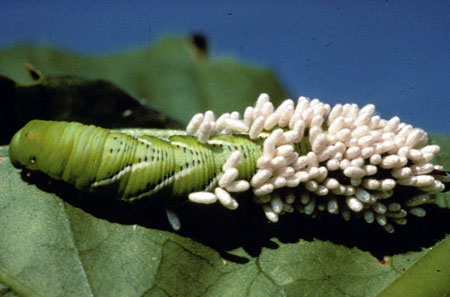Experience with growing tomatoes in high tunnels: Insects, diseases and weeds
The crop many first-time high tunnel producers desire to grow is tomatoes, but for several reasons tomatoes may not be the easiest crop to produce in a tunnel system.
High tunnels have made a big impact on production, especially for many small-scale vegetable producers. High tunnels have the potential of extending the season, improving yield and quality and making organic production possible for many crops, especially a crop like tomatoes that can be difficult to produce organically in our climate. This is the first of several reports on my observations from seven years of conducting high tunnel tomato trials at Michigan State University’s Southwest Michigan Research and Extension Center (SWMREC) in Benton Harbor, Mich. (Read the second report on crop rotation; the third report on fertilization, quality and yield; and the fourth report on irrigation, training and temperature management.)
Insects, diseases and weeds
Reduction in pest pressure is one of the biggest potential advantages to tunnel production. The plastic covering is effective in keeping rain and dew off the leaves and fruit and this is extremely helpful in reducing disease. Many diseases require rain splash to move the pathogen from the ground into the plant and then move it within the plant. This splashing does not happen under a tunnel, except possibly on the edges. To germinate and grow, spores for many fungal diseases require wetting periods of several hours, which also does not occur in a high tunnel. Even if spores do land on the leaves the conditions are not conducive for germination. I have never seen a need to apply disease control measures on my tomatoes. This is significant, since field-grown tomatoes are susceptible to many destructive bacterial and fungal diseases.
Insects, however, are still a concern. The first year I grew tomatoes under tunnels they became infested with tomato hornworm. Since I was growing the tomatoes organically, I decided to wait for the parasitic braconid wasp (see image) to find and help control the hornworms. They didn’t show up and they never have over the past seven years. The clear plastic covering of the high tunnel filters out certain wavelengths of light that many insects use for navigation. This change in light quality may disrupt the navigation of insects like the braconid wasp. However, daytime light levels and quality are not a concern to hornworms and other night-flying moths.

Tomato hornworm parasitized by a braconid wasp. Photo: R.J. Reynolds
Tobacco Company; Bugwood.org
During the past seven years, tomato fruit worm, two-spotted spider mites and thrips have also been a yearly problem on tomatoes and tarnished plant bug and cucumber beetles have been observed on other crops. There are good organic and nonorganic controls for these pests. In Michigan, as long as the tunnel sides and ends are open it is considered an open system allowing growers to use products as if it were an open field situation.
Weeds continue to be a problem in a tunnel system. Raised, plastic-mulched beds can be established under the tunnels if growers have the proper equipment. Plastic mulch will control weeds in the row but weeds will still be a problem between rows even with limited water. Many herbicides for use in tomatoes require incorporation, an activity that may be difficult in a tunnel system. Therefore, the best way to control weeds between rows may be hand-hoeing. Covering the soil with greenhouse ground cloth and planting through it, or placing containers on top of it, reduces weeds but they will still appear at the base of the plants. Wind-borne seed will become established wherever there is bare soil.
For high tunnel research reports generated by Michigan State University Extension at SWMREC, go to the SWMREC Annual Reports website and look at the Annual Reports starting in 2005.
Related MSU Extension articles
- Experience with growing tomatoes in high tunnels: What about crop rotation?
- Experience with growing tomatoes in high tunnels: Fertilization, quality and yield
- Experience with growing tomatoes in high tunnels: Irrigation, training and temperature management
- Experience with high tunnel production: Annual crops that have done well in southwest Michigan



 Print
Print Email
Email

